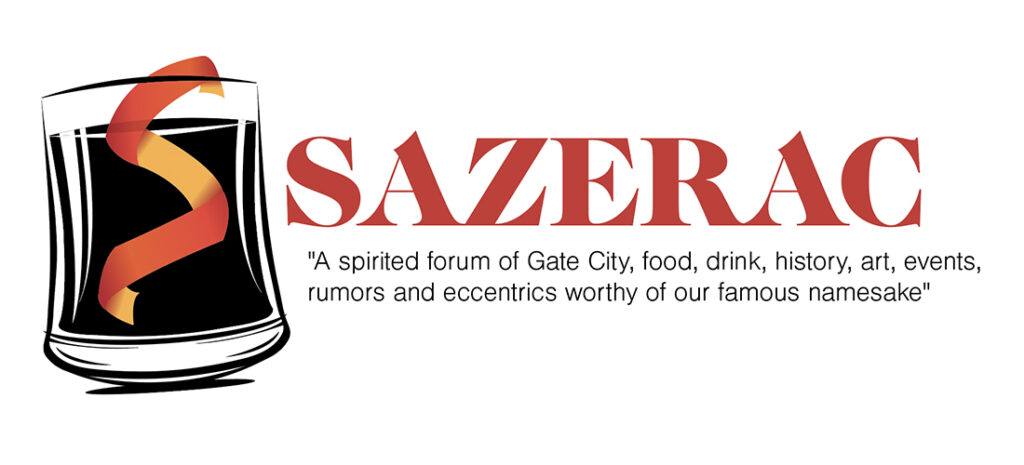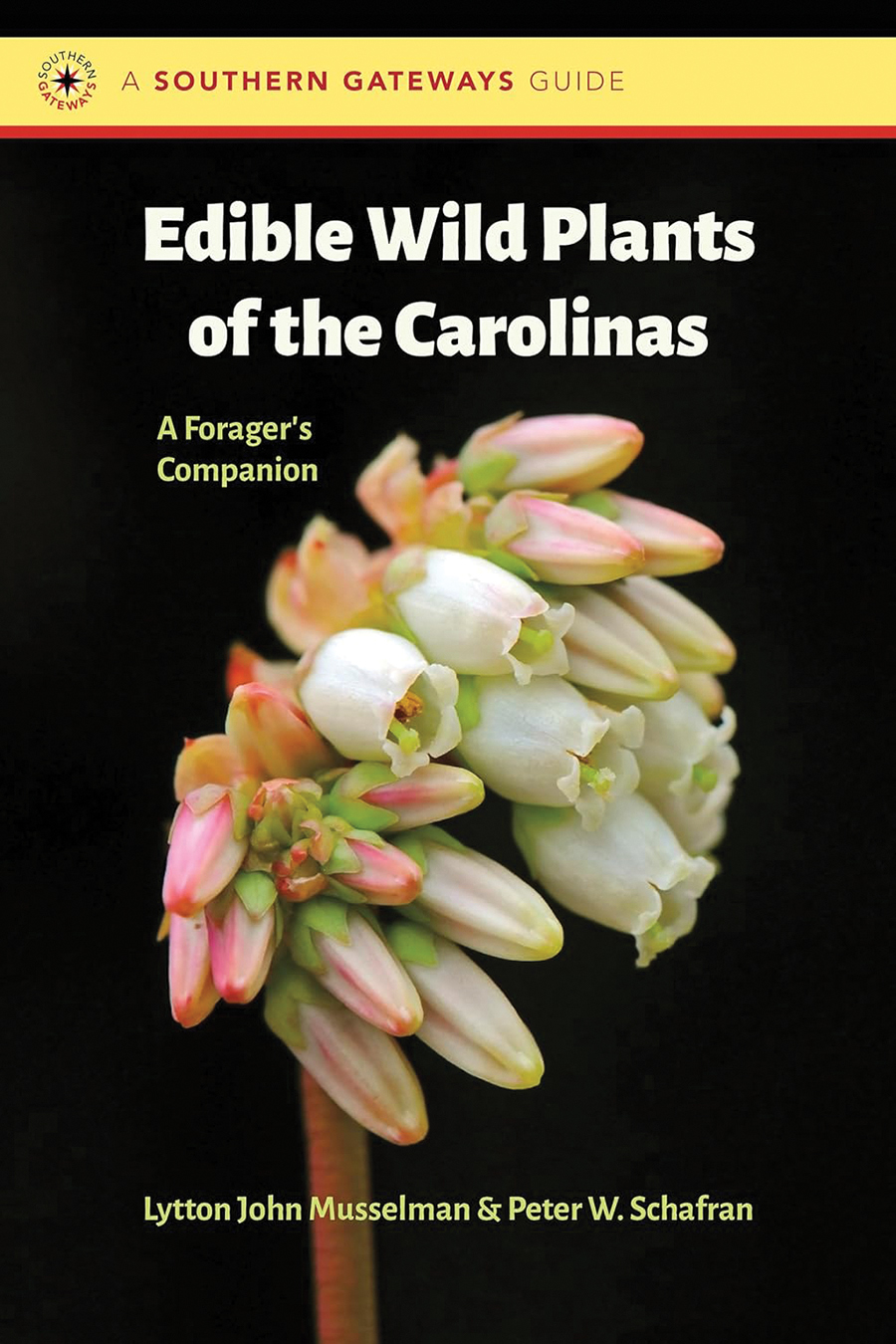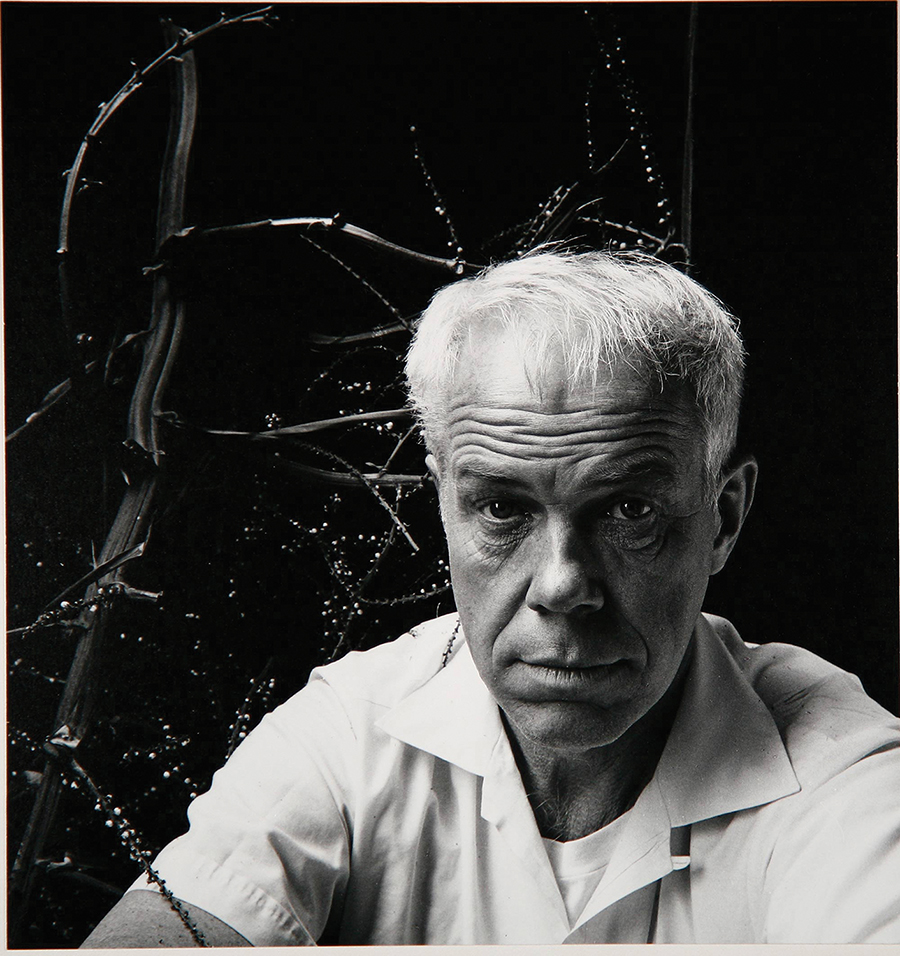Sazerac May 2024

Letters
To Cassie Bustamante in response to her March 2024 feature, “Greensboro: A Cultural Herstory”
My name is Mary Walton, and I am one of Mary Nicholson’s nieces. Thank you so much for recognizing her as one of the eight amazing women you profiled in your article. And what great company she is in.
I thought you would find it interesting that my sister, Lauren, and her daughter, Anna, have both followed in Mary’s footsteps as pilots. She certainly paved the way for them as well as many others.
Mary taught my father — her brother, Frank Nicholson — how to fly, and he became one of the first pilots at Piedmont Airlines and later Chief Pilot. My brother, Tom, is also a pilot and is a captain at Hawaiian Airlines. Lauren’s youngest daughter, Ashley (in college now), is also interested in flying.
Lots of pilots in the family!! Ironically, I am not, even though I am the one named after my aunt.
Anyway, I just wanted to reach out to say thank you on behalf of our whole family!
A remembrance by Phillip Jones spurred by Stephen E. Smith’s March 2024 “Omnivorous Reader” honoring the late Fred Chappell:
Our classroom was in McIver Building, on the ground floor. One class early in the semester, Fred called on a female student and asked her what she thought of the stories assigned for that day. She was quiet, hemmed and hawed a bit, then admitted that she had not, in fact, read the two stories assigned as homework. Fred’s face tightened a bit, then he looked at her and said, “Then take the time now and read the stories.” The class was immediately quiet — nothing like this had ever happened in our collective school experiences.
Fred walked over to the window, opened it, pulled up a chair, and smoked several cigarettes very slowly. Time stood still, only the smoke drifting from his cigarettes showed that we were not frozen in place. No one shifted in their seats or made a sound. After giving her enough time, he looked at her and asked if she had finished the story. She nodded and Fred asked her what she thought. When class ended, every student left that room with a different appreciation of Fred, his class and education in general.
Students generally did their homework after that and contributed to class discussions. One day, perhaps a month later, Fred asked three or four students about the homework with no response, then he looked around. Most students stared down at their desk and at their books, afraid to look directly into his eyes. Disgusted, Fred turned, walked to the door, and threw his books violently into the trashcan, then walked out and away. Silence reigned. Was he standing outside the door waiting for a brave soul to sneak away before the bell ended the class? No one moved, no one left the room, and no one spoke. When the bell finally did ring, we filed out silently and left McIver Building as quickly as possible. Fred had put the fear of God, or the Fear of Fred and his disapproval, into our very souls.
Lorem ipsum dolor sit amet, consectetur adipiscing elit. Ut elit tellus, luctus nec ullamcorper mattis, pulvinar dapibus leo.
A Gold Star for Jamestown
Wrenn Miller Park in Jamestown offers plenty of opportunity for rest, relaxation and community with its picnic tables and sloped grass lawn, which provides plenty of seating for its amphitheater. But the park also offers a moment of remembrance. At its northern end, a Veterans Memorial features benches, dedicated bricks, trees, an evolving maze garden and a brick wall with the names of Jamestown residents who served in World War II. Thanks to Cedarwood Garden Club member Sharla Gardner, a Gold Star Families By-Way Memorial marker, which honors those who have fallen and offers hope and healing to families, is to be installed on May 25. This bronze marker, featuring a granite base donated by Hanes Lineberry, is the only one in Guilford County. Currently, there are four in the state of North Carolina, with three more being added this year. And across the entire United States? A total of 181. This Memorial Day weekend, head to Wrenn Miller park to salute the Gold Star Families By-Way Memorial and pay homage to those who have laid down their lives in service.

Calling All O.Henry Essayists
This year, we’re moving our annual O.Henry Essay Contest to earlier in the year so that you have all summer to meditate on it while you mow your lawn, swim your strokes or swat away the skeeters. The theme this time? “Furry, Feathered and Ferocious.” That’s right, we’re all ears for your animal tails — oops, tales — and we’ll be accepting entries May 1–Sept. 30, 2024. Got a wild hare? Submit a story about it! From beloved pets to snake encounters, we want to get our paws on your story.
Of course, there are some rules:
Submit no more than 1,000 words in a digital format — Word or Pages document, a PDF, pasted into an email, or tattooed on your body and sent via photographs. Essays over 1,000 will not be considered. After all, as Shakespeare wrote, “Brevity is the soul of wit.” (Why were your plays so long, Willy???)
Email entries to cassie@ohenrymag.com.
Deadline to enter is September 30, 2024.
Winners will be contacted via email and will be printed in a 2025 issue.
We can’t wait to hear the clickety-clack of keyboards across the Triad as you type your stories — stories that are sure to make us laugh, cry or rush to the animal shelters to bring home even more rescues. What’s one more at this point?
— Cassie Bustamante, editor
Sage Gardener
 In 1971, my wife, Anne, and I got turned on, tuned in and then dropped out of UNC grad school to become full-time hippie farmers in Pfafftown. We raised chickens, ducks and rabbits, grew our own produce and, equipped with Euell Gibbon’s Stalking the Wild Asparagus, foraged the fields and forests for tasty edibles. We made wild strawberry jam, Carolina cherry wine and ate lots of blackberry cobbler. We enthusiastically gathered chickweed, dandelions and violets to spice up our salads. Though I admit, a lot of things we ate just once.
In 1971, my wife, Anne, and I got turned on, tuned in and then dropped out of UNC grad school to become full-time hippie farmers in Pfafftown. We raised chickens, ducks and rabbits, grew our own produce and, equipped with Euell Gibbon’s Stalking the Wild Asparagus, foraged the fields and forests for tasty edibles. We made wild strawberry jam, Carolina cherry wine and ate lots of blackberry cobbler. We enthusiastically gathered chickweed, dandelions and violets to spice up our salads. Though I admit, a lot of things we ate just once.
The other day, I came across a copy of the recently published and marvelous Edible Wild Plants of the Carolinas: A Forager’s Companion by botanists Lytton John Musselman and Peter W. Schafran. Suddenly my enthusiasm for eating what comes natural was revived. Lavishly illustrated, it provides very sensible guidelines for what to eat, what not to eat and what’s best left in the field with the mice. Here are some of the choice tidbits I picked up from it.
A vital caveat, however: Please do not eat wild plants before consulting their book or some other reliable guide. There are look-alikes. Some plants have delicious edible fruits but deadly leaves and stems (and vice versa). And there are allergy concerns.
So . . . did you know?
All wild violets are edible, though, as the authors concede, “The taste of most species is underwhelming.” However, “field pansies are pleasantly flavored and make a good — and unique — snack.” And how about Johnny-jump-ups in your next Hoppin’ John?
Wild violet plants and flowers can easily be candied, sugared rather than shrinking.
Lamb’s quarter “is one of the tastiest of wild greens.” Raw or cooked, they hint of umami and were favored by Native Americans. Don’t like ‘em? Spit them out and use as a poultice for minor abrasions.
The taste of Pokeweed “is unremarkable — not surprising since it has to be boiled into submission to be eaten.” The berries make good ink and a mediocre poison.
Orange daylilies, both tubers and buds, are edible. “Fresh buds are tasty with an appealing crunch.” The flavor is mild with, again, a hint of umami, which translates to a pleasant savory taste.
Silver maple seeds, aka whirligigs, are edible raw. And, sautéed in olive oil, they have a peanut flavor.
Field garlic is four times stronger than store-bought bulbs.
The pink flowers of the eastern redbud “have a sweet flavor . . . and make an interesting topping for ice cream.”
Elderberry flower heads, when soaked an hour or two in water, make a tasty beverage. The bees aren’t the only ones buzzing over these blooms. You can also make an alcoholic drink from the flowers.
Not only are American beech nuts tasty, you can munch on the foliage.
Chickweed, quite edible, has a bitter and soap-like taste. What’s not to like, say our chickens.
Green amaranth is “one of the tastiest of greens.” Best when cooked.
You can eat the tender young shoots of greenbriar, aka blaspheme vine, though the authors caution that the shoots from one plant may taste pleasantly like asparagus while the shoots of the plant right next to it may be too bitter to eat.
Stinging nettles taste like chard.
The young, tender rosettes of dock leaves are “pleasantly sour and lemony.” Don’t eat a lot of them, though, they say. And don’t bother with the roots.
Glassworts at the beach are tasty and are called “haricots de mer” in France. You can buy them bottled in Spain and they’re delicious.
Mulberry leaves are edible but taste “mediocre.”
Devil’s walking stick is a “tasty vegetable.”
Finally — and again — don’t go rushing out there, gobbling down fruits, leaves and stems without properly identifying the plant. O.Henry doesn’t want to lose a single reader.
— David Claude Bailey

Unsolicited Advice
The season of brunches, baby sprinkles and bridal showers is upon us! You know the rule: Never show up empty handed. Instead of the tried-and-true, aka tired-and-trite, bring your party-thrower one of these alternatives to the classic hostess gifts.
A bottle of wine says “I’m a classy guest,” but a six-pack of unfiltered, craft beer? That says, “I’m chill and easy and will likely stay to help clean up after the party. In fact, you might have trouble getting rid of me.”
Elegant serverware? That only lets your host know you enjoy being served and it damned well better be fancy. Instead, give ’em a massage. Well, not literally — awkward! A gift card to a spa shows that you want your host to have a turn at being served.
Upscale and hard-to-find seasonings might leave your host feeling salty. Sprinkle ’em with a dash of home delivery meals: DoorDash gift cards, so they don’t have to think about cooking again just yet.
Flowers die. But lego bouquets are forever. Plus, putting together their plastic posy will be a great distraction from cleaning up after the party.
Candles are cozy, but what they really need once the last guest (that idiot who brought the six-pack!) leaves is an air purifier. A scented candle masks the lingering B.O., but an air purifier cleans the air. What is that smell? *Sniffs* . . . aaah, nothing.

Just One Thing
(Minor White Photographer by Imogen Cunningham)
Much of renowned American photographer Imogen Cunningham’s 93 years on Earth were spent behind the viewfinder of a camera. Her father, Isaac Burns Cunningham, though not enthusiastic about her going into the arts, supported her education in both academic and creative fields from a young age. When she showed a developing fascination with photography, he built her a dark room in a woodshed on the family’s Seattle property. However, at the time, photography was not a subject one could major in, so she graduated from the University of Washington with a degree in chemistry. Her thesis? “Modern Processes of Photography.” She is credited as the first woman to photograph a nude man, but it was her 1931 image of dancer Martha Graham that caught the eye of Vanity Fair editor Frank Crowninshield and launched her career in portraiture. In this black-and-white 1963 shot of fellow photographer Minor White, we see a stark contrast between the dark background and the light bouncing off of his white hair and shirt. Shadows accentuate the lines on his face. “She likes to photograph anything that can be exposed to light, I remembered her saying,” White said of sitting for this photo. “Only then did I realize that it was her own light — whether she admitted it or even knew it.” Shortly after this photo was taken, White devoted an entire issue of aperture magazine to Cunningham. Strangely enough, both White and Cunningham died within hours of each other. An exhibit entitled Seen & Unseen: Photographs by Imogen Cunningham is currently on display at Reynolda House Museum of American Art and can be seen through June 2.
Got plans? Book Bound
If you’re not into books, jump to the next page or maybe another pub, but we can’t wait for the authors we dream about meeting, panels that stun our views of the world and all the people we meet at this year’s Greensboro Bound Literary Festival, May 16–19 in downtown Greensboro. Like previous festivals, this year’s lineup brings to our not-so-humble literary scene over 60 writers from across the country. The opening keynote event with best-selling author James McBride (Heaven & Earth Grocery Store, The Color of Water, Deacon King Kong) will get things going on Thursday, May 16, at UNCG, thanks to the generous contribution of the University Libraries (registration required: greensborobound.com/event/james-mcbride/).
Other highlights include our favorite NPR Weekend Edition Sunday host Ayesha Rascoe — in person! — with her book HBCU Made; a special event around an essay collection on video games called Critical Hits, featuring writers Carmen Maria Machado (In the Dream House), Nana Kwame Adjei-Brenyah (Chain Gang All-Stars), J. Robert Lennon (Hard Girls) and Ander Monson (Predator: A Memoir, a Movie, an Obsession). Again, thanks UNCG.
Naturally, conversations will swirl around immigration, climate change, mean girls, diaspora and disappearing, apples, and romantic entanglement as poets, essayists and fiction writers argue about the issues of the day. Family friendly? Greensboro Bound also brings back a robust collection of children’s and young adult authors on Saturday, May 18, to coincide with the various adult events at the Greensboro Cultural Center and Greensboro History Museum.
All of this is a prelude to Sunday, May 19, with a special celebration of author Randall Kenan as the closing event of Greensboro Public Library’s “One City One Book” season. Kenan, who died in 2020, was a North Carolina literary legend and the editor of Carolina Table — the library’s choice for the city-wide read in 2023—24. If you’re a serious foodie, you won’t want to miss the panel discussion (AND FOOD!!!) at The Historic Magnolia House with his friends and colleagues Marianne Gingher, Daniel Wallace, Gabriel Calvocoressi and North Carolina Poet Laureate Jaki Shelton Green. As always, all programming is free. The question is are you?
